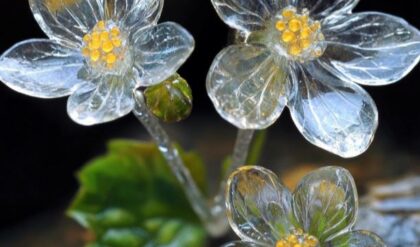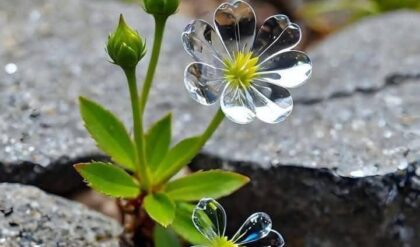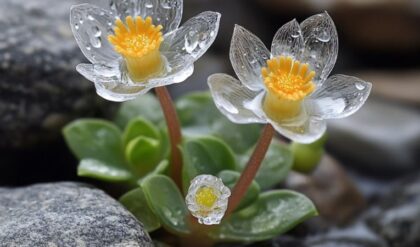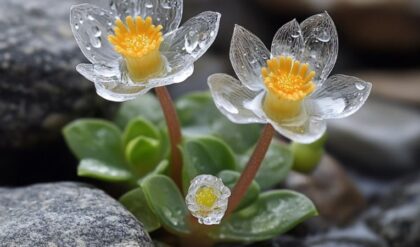Hydrangeas are not just mere plants; they are living canvases in a gardener’s masterpiece, bringing joy through their luxuriant blooms and vibrant hues. These enchanting flowering shrubs, renowned for their lush, voluminous flowers that can morph from blue to pink based on soil acidity, serve as an unexpected reminder of nature’s adaptable beauty. The journey to mastering the enchanting hydrangea involves understanding its diverse varieties, each offering unique characteristics and care requirements while contributing to an intricate symphony in the garden. This makes it imperative for gardeners—whether seasoned or novices—to delve into comprehensive guides that illuminate every aspect of hydrangea cultivation, from selection to maintenance, paving the way for stunning garden displays throughout the seasons. In this quest, a plethora of resources are available to unlock strategies for successful hydrangea gardening, providing insights that transform simple planting into artful horticulture.
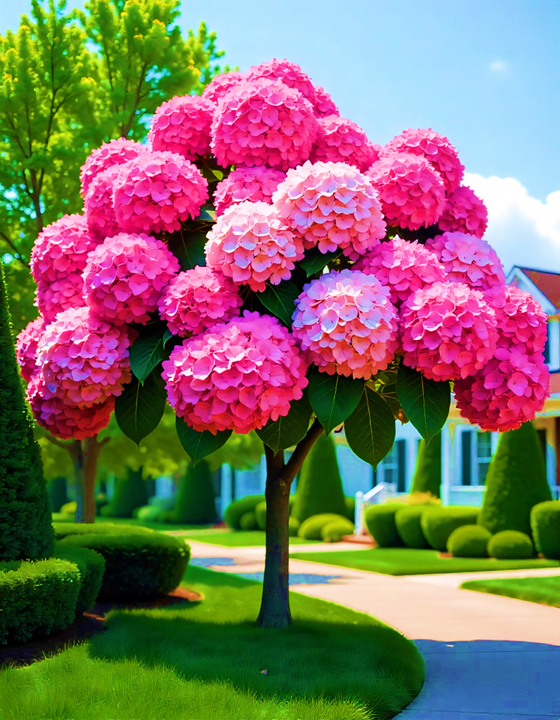
Understanding Hydrangea Varieties
Diverse Colors and Forms One of the most delightful aspects of hydrangeas is their incredible diversity. From the enchanting mophead to the delicate lacecap and even the uniquely shaped oakleaf variety, each type offers distinct textures and colors that can instantly elevate garden aesthetics. For instance, oakleaf hydrangeas provide not only beautiful blossoms but also intricately lobed leaves that change with the seasons, becoming a tapestry of color in autumn. Such versatility encourages gardeners to explore various combinations, creating visually appealing landscapes.
Mophead Hydrangeas
Mophead hydrangeas, also known as bigleaf or French hydrangeas, are characterized by their large, spherical flower heads that resemble a mop. These captivating blooms can range in color from vibrant pink and purple to mesmerizing blue, depending on the soil’s pH level. Mopheads are renowned for their voluptuous appearance and their ability to thrive in partially shaded areas, making them a popular choice for gardens and landscaping.
Mophead hydrangeas are known for their lush, full-bodied flower clusters that can reach up to 12 inches in diameter. Each cluster is composed of numerous individual florets that create a stunning, rounded shape. These hydrangeas prefer well-drained, acidic soil and partial shade, thriving in locations that receive morning sun and afternoon shade. Proper pruning and fertilization are essential for maintaining the plant’s health and promoting abundant blooms.
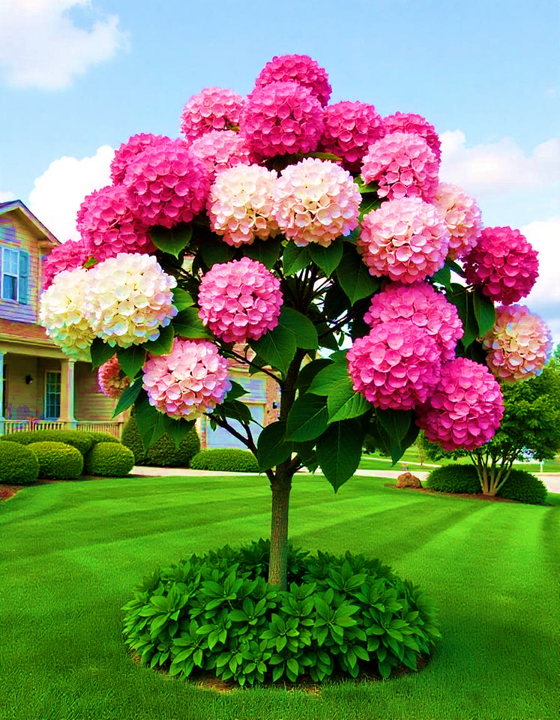
Lacecap Hydrangeas
Lacecap hydrangeas, in contrast to their mophead counterparts, feature delicate, lace-like flower heads that exude an airy, ethereal charm. These hydrangeas display a central cluster of small, fertile florets surrounded by a ring of larger, sterile petals. The result is a captivating arrangement that resembles a lacy crown atop the plant’s foliage. Lacecaps come in a range of colors, including white, pink, blue, and purple, with the hues often influenced by soil pH.
Lacecap hydrangeas are valued for their elegant and refined appearance, making them a popular choice for more formal garden settings or as accent plants. They typically have a more compact growth habit compared to mophead varieties, making them well-suited for smaller spaces. Proper care, including appropriate pruning and soil amendment, is essential for maintaining the lacecap’s delicate beauty.
Oakleaf Hydrangeas
The oakleaf hydrangea is a unique and captivating variety that sets itself apart with its distinctive foliage. Unlike the rounded leaves of other hydrangea types, the oakleaf features large, lobed leaves that resemble the shape of an oak tree’s leaves. These plants also offer a remarkable display of autumn colors, with the leaves transforming into shades of burgundy, bronze, and deep purple as the seasons change.
Oakleaf hydrangeas are particularly prized for their eye-catching foliage, which provides visual interest throughout the growing season. In addition to their stunning leaves, these hydrangeas produce large, cone-shaped flower clusters that range from white to pink, depending on the soil’s acidity. Oakleaf hydrangeas are well-suited for gardens with partial shade and require well-drained, acidic soil to thrive.
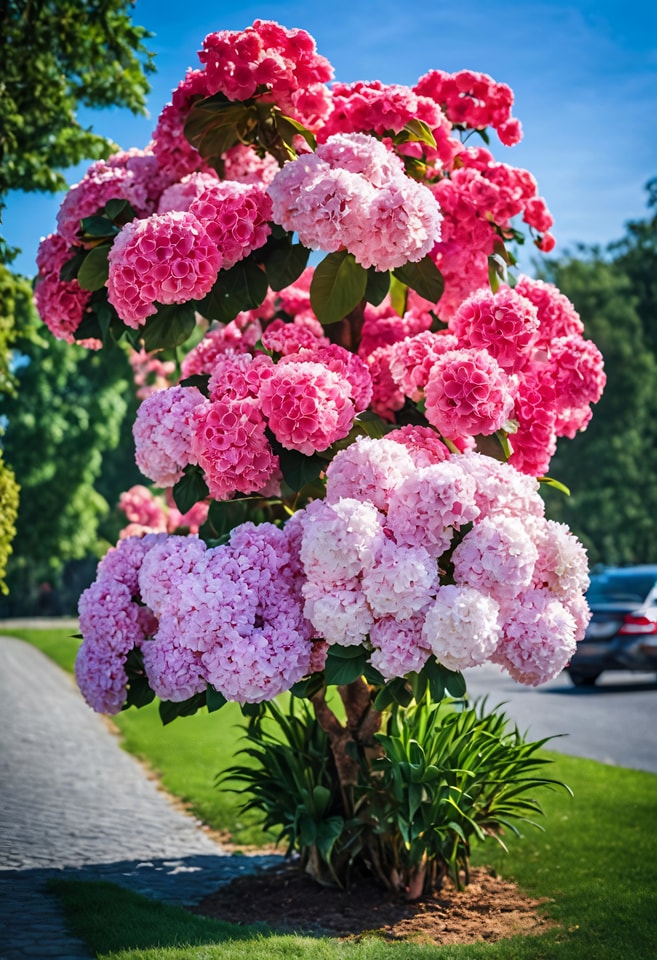
Effective Planting Techniques
Timing and Soil Considerations When it comes to hydrangea gardening, timing is everything. Planting during spring maximizes the potential for robust growth as these plants awaken from dormancy, eager to display their floral brilliance. Additionally, selecting the right soil—rich in organic matter and appropriately acidic or alkaline—is essential for achieving those mesmerizing hues since soil pH directly influences flower color. Imagine planting a rich blue hydrangea, only to discover through experimentation that tweaking the soil pH allows it to bloom in radiant pinks. This dynamic interplay captures the essence of why hydrangeas enchant gardeners, transforming the space into a canvas of shifting colors and emotions.
Planting Time
The optimal time to plant hydrangeas is in the spring, when the plants are emerging from their dormant state. This timing allows the hydrangeas to establish strong root systems and acclimate to their new environment before the heat of summer arrives. Planting in the spring also ensures that the plants have ample time to develop a robust structure and prepare for the upcoming growing season, increasing the likelihood of vibrant blooms.
When planting hydrangeas, it’s crucial to choose a location that provides the right balance of sunlight and shade. Most hydrangea varieties thrive in partial shade, with a few hours of direct morning sun and afternoon shade. This environment mimics their natural habitat and helps prevent the flowers from wilting or discoloring under intense sunlight.
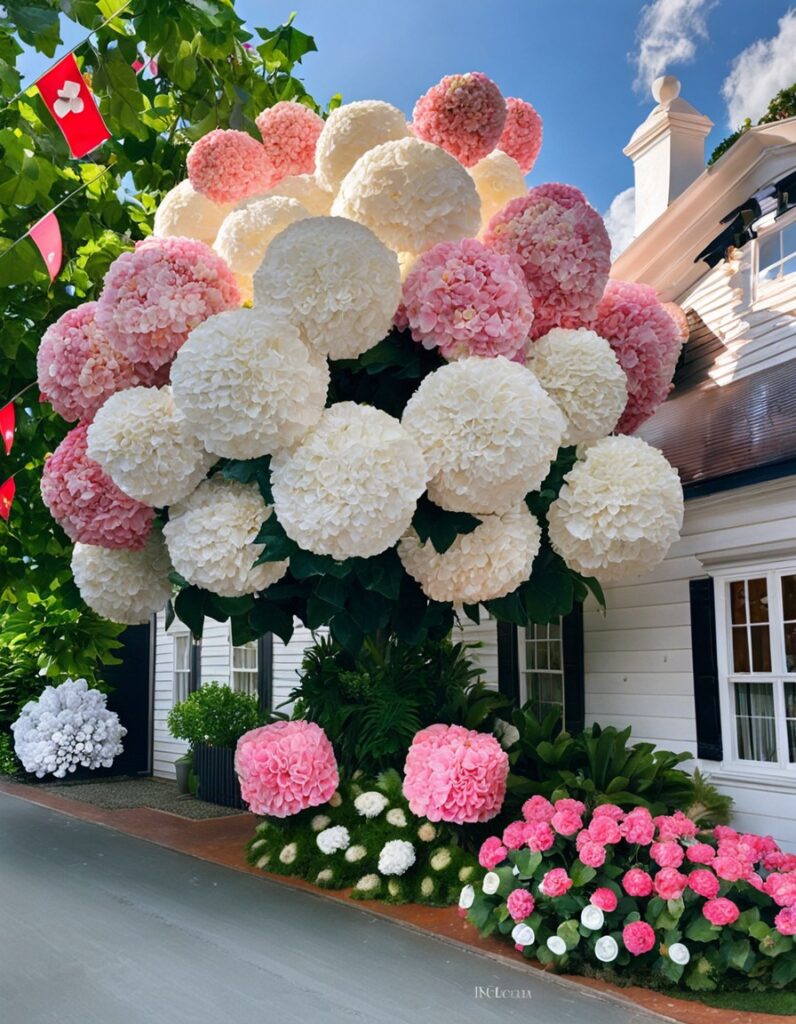
Soil Preparation
The soil composition and pH level are critical factors in the success of hydrangea gardening. These plants prefer well-drained, nutrient-rich soil that is slightly acidic, with a pH range of 5.5 to 6.5. If the soil is too alkaline, the hydrangeas may struggle to absorb essential nutrients, leading to stunted growth and poor flower production.
To create the ideal soil conditions, incorporate organic matter such as compost or peat moss into the planting area. This not only improves drainage and aeration but also helps maintain the necessary acidity. Depending on your soil’s pH, you may need to add sulfur or aluminum sulfate to lower the pH and make the soil more acidic.
Soil pH and Flower Color
One of the most fascinating aspects of hydrangeas is their ability to change flower color based on the soil’s pH level. In acidic soils, hydrangeas typically produce blue or purple blooms, while in alkaline soils, the flowers tend to be pink or red. This color variation is due to the plant’s ability to absorb and utilize different minerals, such as aluminum, which is more available in acidic soils.
By manipulating the soil pH, gardeners can experiment with different flower hues and create visually stunning color combinations within their gardens. This dynamic interplay between soil chemistry and floral aesthetics is part of the allure that captivates hydrangea enthusiasts, transforming the gardening experience into an ongoing exploration of nature’s adaptability.
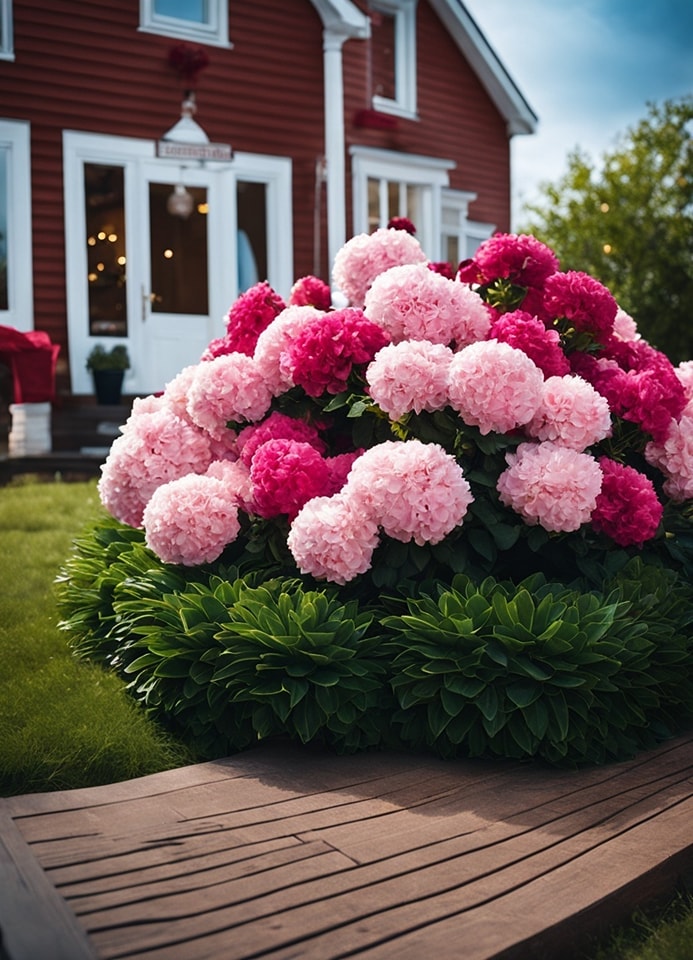
Nurturing Your Hydrangeas
Watering and Fertilization Highlights Nurture your hydrangea oasis by tending to their specific watering needs—aim for deep, consistent moisture without oversaturation. Think of the careful balance akin to nurturing relationships, where giving attention fosters growth. Various guides suggest that fertilization can further enhance flowering; applying a balanced slow-release fertilizer during early spring fuels growth and sets the stage for vibrant blooms later in the growing season. Gardeners must ponder how specific practices, such as pruning, shape the destiny of these plants—akin to an artist sculpting a marble block to reveal a masterpiece hidden within.
Watering Requirements
Consistent and adequate moisture is essential for the health and flourishing of hydrangeas. These plants thrive in well-drained soil that retains a moderate level of humidity, ensuring their root systems have access to the necessary water without becoming waterlogged.
When watering hydrangeas, aim for deep, thorough soakings rather than frequent, shallow waterings. This encourages the roots to grow deeper into the soil, making the plants more resilient to drought and other environmental stresses. During hot, dry periods, it’s crucial to maintain a regular watering schedule, providing about 1 inch of water per week, either through rainfall or manual irrigation.
It’s important to avoid overwatering, as this can lead to root rot and other fungal diseases. Ensure the soil has adequate drainage, and consider incorporating organic matter to improve water retention and aeration. By striking the right balance between moisture and drainage, gardeners can create an optimal environment for their hydrangeas to thrive.

Fertilization Strategies
Proper fertilization can enhance the growth, flowering, and overall vigor of hydrangeas. While these plants are relatively low-maintenance, a well-timed application of a balanced, slow-release fertilizer can significantly boost their performance.
The ideal time to apply fertilizer is in early spring, just as the plant begins to emerge from dormancy. This timing coincides with the plant’s natural growth cycle, allowing the nutrients to be absorbed and utilized for optimal foliage and flower development.
When selecting a fertilizer, look for a balanced formula, such as a 10-10-10 or 12-4-8 ratio of nitrogen, phosphorus, and potassium. Slow-release fertilizers are preferred, as they provide a steady supply of nutrients over an extended period, reducing the risk of over-fertilization and promoting consistent, healthy growth.
In addition to the balanced fertilizer, gardeners may also consider supplementing with soil amendments that target specific nutrient deficiencies. For instance, adding iron or aluminum sulfate can help maintain the desired blue or purple hues in acidic soils, while lime can help raise the pH for pink-flowering hydrangeas.
Pruning and Shaping
Pruning is an essential aspect of hydrangea care, as it not only maintains the plant’s shape and size but also encourages the development of new, flower-bearing stems. The specific pruning techniques and timing can vary depending on the hydrangea variety, making it crucial for gardeners to familiarize themselves with the unique needs of their chosen plants.
For mophead and lacecap hydrangeas, the general guideline is to prune them in late winter or early spring, just before new growth emerges. This allows gardeners to remove any dead or damaged wood, as well as shape the plant and control its size. When pruning, it’s essential to make clean, angled cuts just above a set of healthy buds, ensuring the plant’s future growth is not compromised.
Oakleaf hydrangeas, on the other hand, typically require less frequent pruning, with the best time being immediately after the plant has finished flowering. This allows the new growth to develop and mature before the following season’s blooms appear. Proper pruning of oakleaf varieties helps maintain their distinctive shape and maximize the stunning autumn foliage display.
By considering the unique pruning needs of each hydrangea type, gardeners can sculpt their plants into visually appealing, healthy specimens that continue to enchant throughout the seasons. This delicate dance between gardener and plant is akin to an artist shaping a masterpiece, revealing the hidden potential within each hydrangea.
Challenges and Troubleshooting
Pest Management Strategies While hydrangeas are relatively low-maintenance, challenges may arise—be it invasive pests or unpredictable weather patterns. Knowledge of effective pest management is vital; integrating natural pesticides can minimize harm to pollinators and the ecosystem at large. However, consider the broader implications: addressing these challenges not only preserves the hydrangea’s beauty but also contributes to biodiversity, underscoring the interconnectedness of plant health and surrounding wildlife. In cultivating these enchanting shrubs, gardeners become stewards of continuity, ensuring sustenance for local ecosystems even as they create decorative beauty.
Common Pests and Diseases
Hydrangeas, like any other plants, can be susceptible to a variety of pests and diseases that can threaten their health and appearance. Understanding the most common issues and implementing effective management strategies is crucial for maintaining a thriving hydrangea garden.
One of the most problematic pests for hydrangeas is the aphid. These small, sap-sucking insects can quickly infest plants, causing stunted growth, distorted leaves, and a general decline in plant vigor. Aphids also secrete a sticky substance called honeydew, which can attract other pests and promote the growth of sooty mold.
Another common pest is the hydrangea leaftier, a caterpillar that rolls and binds the leaves together, creating a protective shelter. This can lead to unsightly damage and stunted growth if left unchecked.
Fungal diseases, such as powdery mildew and leaf spot, can also be a concern for hydrangeas, particularly in humid or crowded growing conditions. These diseases can cause discoloration, premature leaf drop, and an overall reduction in the plant’s aesthetic appeal.
Integrated Pest Management
To effectively manage pests and diseases in a hydrangea garden, a holistic approach known as Integrated Pest Management (IPM) is recommended. IPM combines cultural, biological, and, as a last resort, chemical control methods to address pest and disease issues while minimizing harm to the environment and beneficial organisms.
Cultural control methods include practices like proper plant spacing, maintaining good air circulation, and removing any infected or damaged plant material. These strategies help create an environment that is less favorable for pests and diseases to thrive.
Biological control involves the introduction of natural predators or parasites that feed on the problematic insects or pathogens. For example, ladybugs and lacewings are effective natural aphid predators, while certain beneficial fungi can help combat fungal diseases.
Chemical control, using natural or organic pesticides, should be a last resort, as it can potentially impact non-target organisms, including pollinators. When necessary, choose products that are specifically formulated for hydrangeas and follow the instructions carefully to ensure safe and effective application.
By adopting an IPM approach, gardeners can address pest and disease challenges in a sustainable manner, protecting the health and beauty of their hydrangeas while also supporting the broader ecosystem.
Exploring Cultural References and Symbolism
A Garden’s Narrative Moreover, hydrangeas have long been symbols of gratitude, pride, and heartfelt emotions across cultures. Engaging with the deeper meanings associated with these plants adds layers to the gardening experience—think of arranging a bouquet of hydrangeas as a heartfelt expression during special occasions, infusing ordinary moments with profound significance. The act of nurturing hydrangeas transcends aesthetic pleasure; it transforms gardens into repositories of cherished memories and stories woven through floral whispers, enriching human experience beyond the physical realm. By understanding these layers—varietals, ecological responsibilities, emotional connections—we see that hydrangeas collectively stand as a celebration of nature’s artistry, calling on us to both cultivate and admire their whimsical beauty. Each bloom is a testament to our stewardship of the land, inviting introspection and connection as we engage in this delicate dance of creation.
Cultural Significance of Hydrangeas
Hydrangeas have long held a prominent place in the cultural and symbolic landscapes of various societies. These enchanting flowers have been imbued with a rich tapestry of meanings and associations, reflecting the deep connections between humans and the natural world.
In Japan, hydrangeas are revered as symbols of gratitude, apology, and heartfelt emotion. The delicate blooms are often gifted as a means of expressing deep appreciation or a sincere desire to make amends. This tradition speaks to the plant’s ability to convey the nuances of human relationships and the importance of honoring emotional bonds.
In the United States, hydrangeas have become associated with pride and boastfulness, particularly in the context of grand, well-manicured gardens. These lush, vibrant flowers have the power to evoke a sense of accomplishment and horticultural prowess, as gardeners take pride in their ability to cultivate such magnificent specimens.
Across many cultures, hydrangeas are also seen as symbols of abundance, fertility, and the cyclical nature of life. Their voluptuous blooms and lush foliage have drawn parallels to the fecundity of the natural world, while their ability to change color based on soil conditions reflects the dynamic adaptability of living systems.
Hydrangeas and Emotional Connections
Beyond their cultural significance, hydrangeas have the power to evoke deep emotional connections and personal narratives within the garden. The act of nurturing these plants, from selection to care, becomes a journey of discovery and self-expression.
For many gardeners, the process of choosing and curating a hydrangea collection is akin to assembling a tapestry of memories and experiences. Each variety, with its unique characteristics and color palette, can be imbued with personal meaning, whether it’s a reminder of a cherished childhood garden or a symbol of a significant life event.
As the hydrangeas bloom and evolve throughout the seasons, they become a living embodiment of the gardener’s own growth and transformation. Tending to these plants, pruning, and witnessing their vibrant displays can evoke a sense of pride, accomplishment, and deep connection to the natural world.
Furthermore, the placement and arrangement of hydrangeas within a garden can serve as a canvas for storytelling. The way these plants are integrated into the largerlandscape can reflect the gardener’s experiences, aspirations, and emotional landscapes.
The thoughtful selection of colors, for instance, may represent different emotional states or memories tied to specific times in one’s life. A garden lush with blue-hued hydrangeas might evoke calmness and nostalgia, while vibrant pinks could symbolize joy and celebration. This dynamic relationship between color, arrangement, and emotion creates a rich tapestry—one that celebrates individual stories and collective narratives within the shared experience of gardening.
The Role of Hydrangeas in Celebrations
In various cultural contexts, hydrangeas serve more than just ornamental purposes; they play a significant role in celebrations that mark important life moments. Whether adorning weddings, anniversaries, or memorial services, these blooms take on meanings shaped by the circumstances of their gifting or display.
During weddings, for example, hydrangeas are often used because of their dense blooms, which can symbolize flourishing love and heartfelt commitment. The choice of hue also resonates with the emotions surrounding the event, transforming floral arrangements into expressions of personal sentiment. This symbolism is not confined merely to aesthetics but rather encompasses the broader spiritual connection of love and unity shared among the couple and their families.
Conversely, in memorial services, hydrangeas can convey messages of remembrance and honor. Their ability to flourish even under less-than-ideal conditions serves as a metaphor for resilience and the enduring nature of love—the kind that persists beyond the physical realm. By using hydrangeas in such situations, families express their enduring connections with loved ones while intertwining beauty and sorrow in a poignant tribute.
The ritual of arranging hydrangeas cultivates not only beautiful environments but also serves as an art form—a tangible manifestation of feelings that may be too complex for words alone. Each bouquet crafted carries with it a story, an emotional imprint, reminding us that gardens can embody both joy and grief in equal measure.
Environmental Implications of Cultivating Hydrangeas
Gardening is no longer solely about creating picturesque spaces but has evolved into an ecological responsibility. As gardeners nurture plants like hydrangeas, they contribute to biodiversity and environmental health. Understanding this significant interplay allows us to walk a line between aesthetic pleasure and conscientious stewardship of our surroundings.
Hydrangeas are generally hardy plants known for attracting beneficial insects such as bees and butterflies. These creatures play critical roles in pollination and maintaining ecosystems. By fostering a garden marked by hydrangeas, gardeners inadvertently support local wildlife, enhancing the overall vibrancy of their surroundings. Additionally, hydrangeas’ adaptability to various soil types and moisture levels contributes positively to soil health, illustrating how one plant can have multiple ecological repercussions.
However, it’s essential to recognize that effective gardening must involve mindfulness in practice. Embracing organic and sustainable gardening techniques minimizes negative impacts on chemical ecosystems and promotes the health of desired populations. Incorporating native planting practices alongside hydrangeas can further enhance biodiversity, augmenting not just visual appeal but also fostering an environment where plants and animals co-exist symbiotically.
As gardeners embrace floral stewardship, the act of tending to hydrangeas evolves from mere cultivation to a profound engagement with nature—a conscious choice to weave beauty into the fabric of ecological health.
Conclusion
Engaging with hydrangeas extends far beyond their aesthetic charm—they’re intricately woven into cultural rituals, emotional ties, and ecological imperatives. With roots embedded in gratitude and pride, their multifaceted symbolism invites us to explore deeper narratives linked to our lives and connections. As we navigate the challenges posed by pests and diseases, adopting strategies like Integrated Pest Management provides sustainable opportunities to safeguard not just our gardens, but also our broader ecological responsibilities.
Moreover, every bloom represents the confluence of human experience and natural beauty, a celebration of resilience amidst life’s fluctuating joys and sorrows. Cultivating hydrangeas requires a commitment to nurturing relationships—with the earth, our communities, and ourselves—reminding us of our ongoing journey of growth. In cherishing each hydrangea bloom, we participate in a timeless dance between nature’s artistry and the richness of human connection, leaving nothing short of a vibrant legacy in our gardens and beyond.
